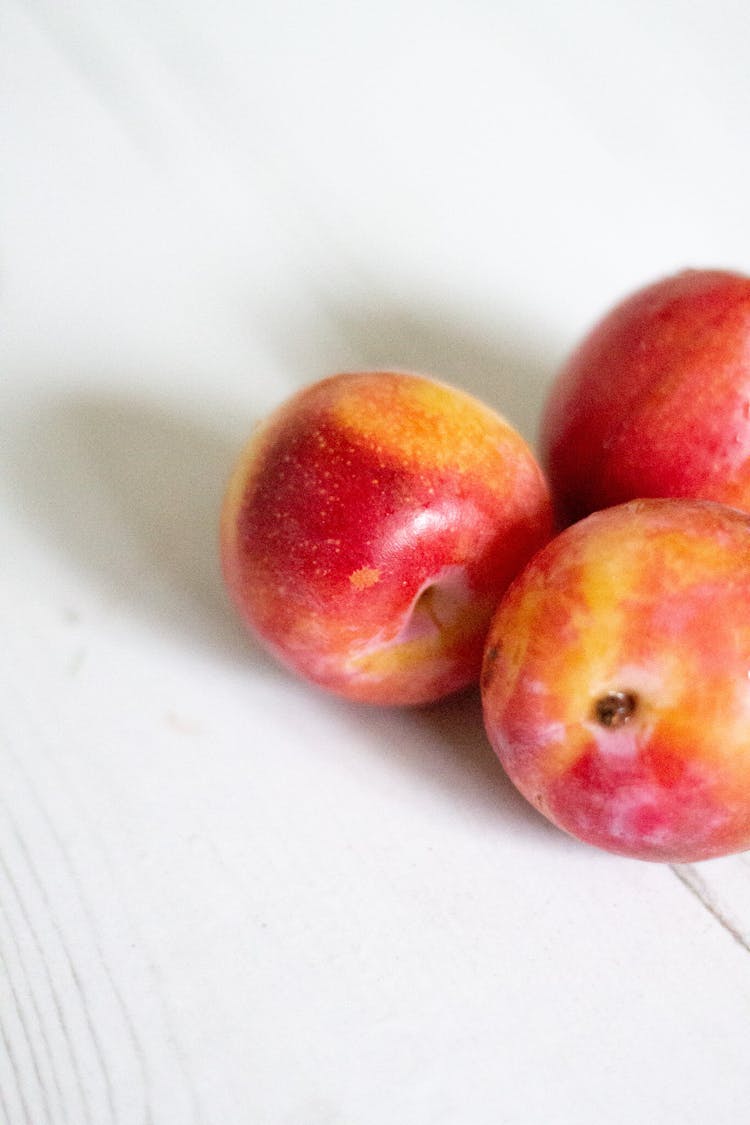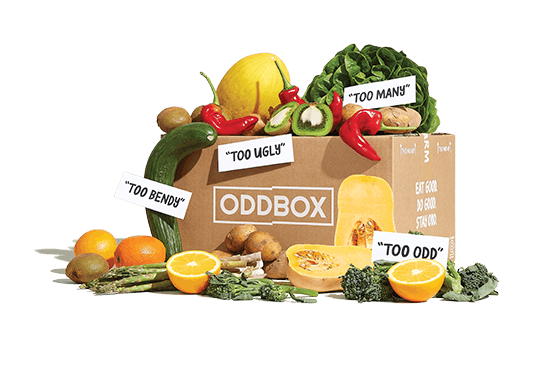How to know when your fruit is ready to eat
You’ve received your box and it’s packed with delicious fruit. How do you tell if or when they’re ripe enough to eat? And where should you store them for best results? We’ve put together a guide to help you.

STONE FRUIT
Stone fruits include plums and apricots, peaches and mangoes. Generally, you can ignore any best before dates as you can tell if stone fruits are ready to eat by touch and smell. Store stone fruit at room temperature.
For ripe and juicy nectarines and peaches, you’ll want them to be soft to the touch. If they’re too hard, they’re not ready to eat. Store at room temperature in a paper bag to speed up the ripening process. Try this guide to storing and cooking nectarines and peaches or try this savoury peach and courgette pizza.
Plums will go a darker colour when they’re ready to eat. Like peaches, plums are ripe when they’re soft to the touch.
Mangoes should feel firm but still have a slight give when you press them. The stem will smell particularly sweet too. As with melons, the heavier a mango, the riper it is likely to be.
Cherries are at their juiciest in the summer. They are firm to the touch, but tender enough to bite into easily.
There’s nothing more frustrating than an unripe avocado. Leave it to ripen in a brown paper bag at room temperature. To tell when it’s ripe, the flesh should give slightly when pressed. You can also peel back the stem at the top of the fruit – if it comes away easily and the flesh is green, it’s ripe and ready.
BERRIES
Berries do not have a stone in the middle, they are small, roundish fruit that tend to come into season in the summer. Berries are best stored in the fridge to keep from ripening too quickly and going mouldy.
Strawberries will be firm and shiny and definitely not soft or mushy. Save the tops to infuse sparkling water.
Blueberries are good to eat when they have a firm, blue skin rather than wrinkly or too soft. Ripe blueberries are sweet when you bite into them. To keep them for longer, freeze blueberries to add to your smoothies or pancakes.
Ripe raspberries are bright in colour, with full, round drupelets – you’ll see that a raspberry, just like a blackberry, is made up of lots of little round drupelets. Bite into one and it should be wonderfully sweet.
Ripe blackberries have a dark inky shine with full, round drupelets – when they are ripe they are juicy with a sweet, slightly tart flavour.
Gooseberries are slightly sweet with a deliciously sharp flavour. Press a gooseberry between your fingers and if it’s ripe, it will give a little beneath the pressure. Like other berries, gooseberries freeze well just as they are.
Ripe grapes are shiny and firm. They are overripe when they are wrinkly and soft. Freeze any grapes you won’t get through for a sweet, refreshing snack or to cool down your drinks in place of ice cubes.
MELONS
Melons originate in central Asia and are now grown in hot climates around the world. There are many different types of melon, but the most common we know are watermelon, yellow-skinned honeydew and orange-fleshed cantaloupe.
Knock your watermelon to see how ripe it is. When knocked, it will have a hollow sound. Be aware that watermelons, unlike other melons don’t ripen. Their ripeness depends on when they were harvested. Ripe watermelons will have a dull colour rather than a shiny skin. Did you know you can turn the rind into chutney?
Honeydew melons are similar to watermelons in that they have a dull appearance when ripe. You can tell if a honeydew or cantaloupe melon is ripe by pushing your thumb on the round section where it was attached to the vine – it will be slightly soft and smell slightly sweet.
ORCHARD FRUIT
These British fruits grow well during the autumn months but can be stored for months, well into the spring. Orchard fruits refer to fruits that grow on trees. Did you know in the UK, there are over 2,200 varieties of apple?
Apples can last for months when stored in the fridge. Apples are at their best when firm and crisp without any bruises. Feel them to see how firm they are. If they’re slightly wrinkly, peel away the skin and cut away any bruised flesh, then chop the rest into your breakfast bowl.
To test if a pear is nice and juicy, press gently at its stem to see if it is soft and gives slightly. Pears don’t ripen on the tree so need to be left at room temperature to mature by themselves.
CITRUS FRUITS
Citrus fruits include lemons, limes, oranges and grapefruits. These fruits ripen on the tree and will be picked when they have a firm, glossy skin. Generally ripe citrus fruits will smell zesty and bright – a bit like the sun-drenched citrus groves they come from.
A ripe orange or grapefruit will be firm with a thin, smooth skin. The riper the orange or grapefruit, the heavier they are.
Lemons and limes have a glossy skin and should give a little when squeezed but still be quite firm.
EXOTIC FRUITS
This colourful bunch hail from further afield – a vibrant assortment of our favourite fruit.
It’s easy to tell when bananas are ripe or unripe. When they’re unripe, they’re green all over – in some cuisines, you can slice unripe green bananas and cook them in a soup, they’re delicious! Bananas are good to eat just as they are when they’re yellow with black spots here and there. Overripe bananas are an ingredient in their own right – perfectly sweet and mushy to turn into banana bread or pancakes.
When it comes to pineapples, the more yellow they are on the outside, the riper they are. They shouldn’t be rock-hard but slightly tender when you touch them. Give your pineapple a sniff – if it smells fruity and sweet, it’s probably ripe.
Kiwis are ripe when they are firm but give slightly when you apply pressure. Store them at room temperature to help them ripen, then move to the fridge to help them last longer.
Passion fruits can be deceptive because, unlike other fruit, they are ripe when they are wrinkly. Look out for dark-purple, slightly wrinkled skin – if they’re overly wrinkled, they may be overripe.
Persimmons, or kaki as they’re sometimes called, are deliciously juicy, sweet fruit. Like kiwi fruit, they are ripe when they’re firm but give slightly when pressed. If they’re too hard, store them at room temperature until they mature.
Pomegranates are secretive fruit. It’s hard to tell how ripe they are just by the colour, which can vary from pink to dark red. They may have blemishes too but that doesn’t mean they are unripe. Like oranges, the best way to tell if a pomegranate is ripe is by holding it – the heavier it is, the riper it is likely to be.

